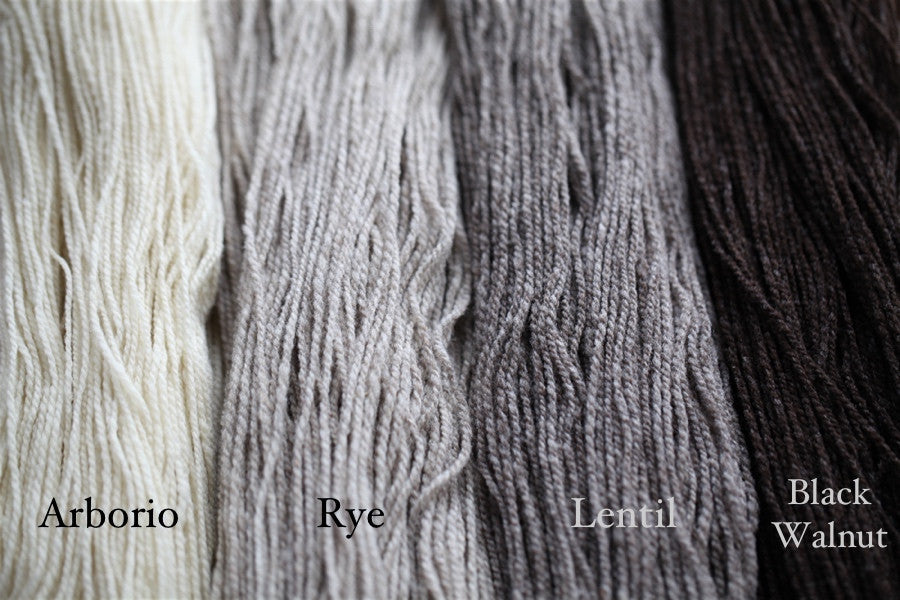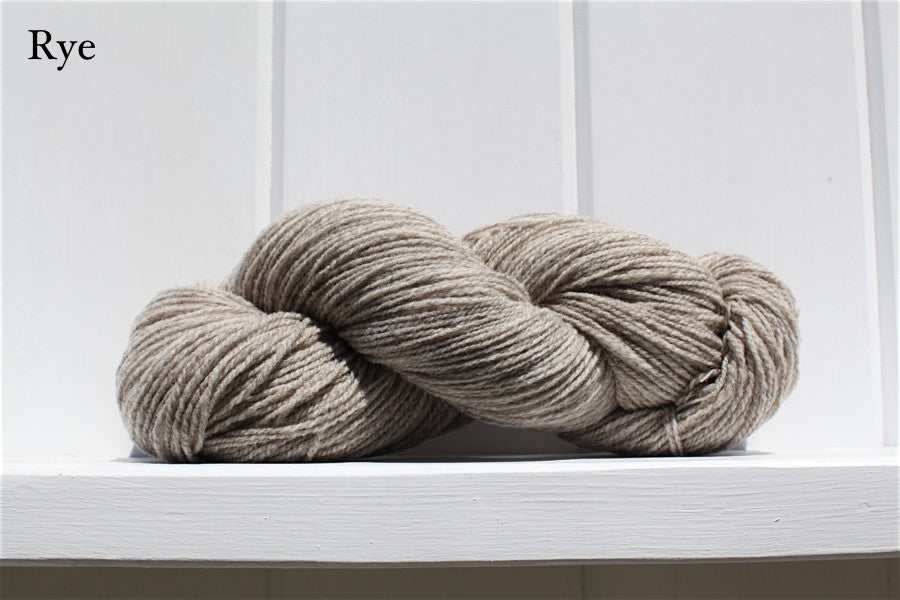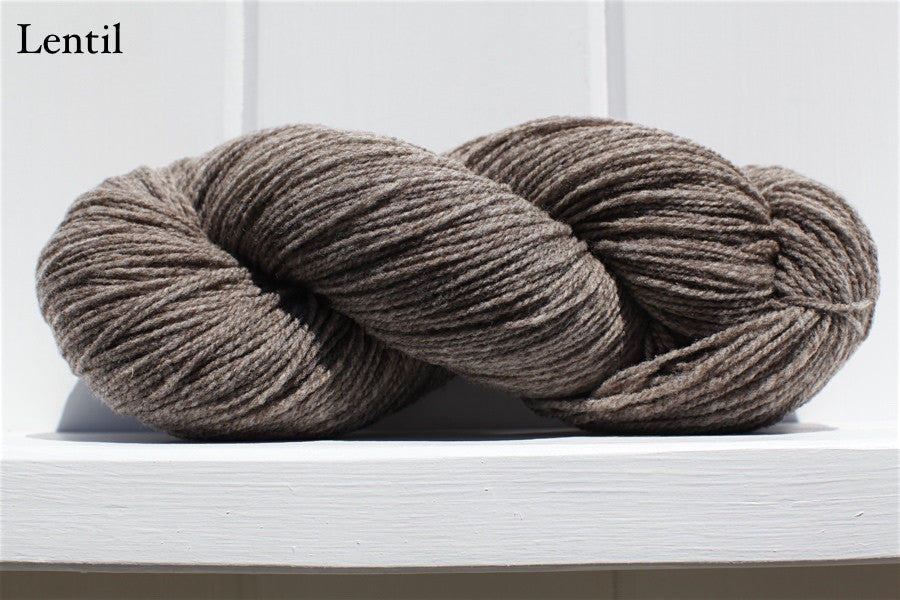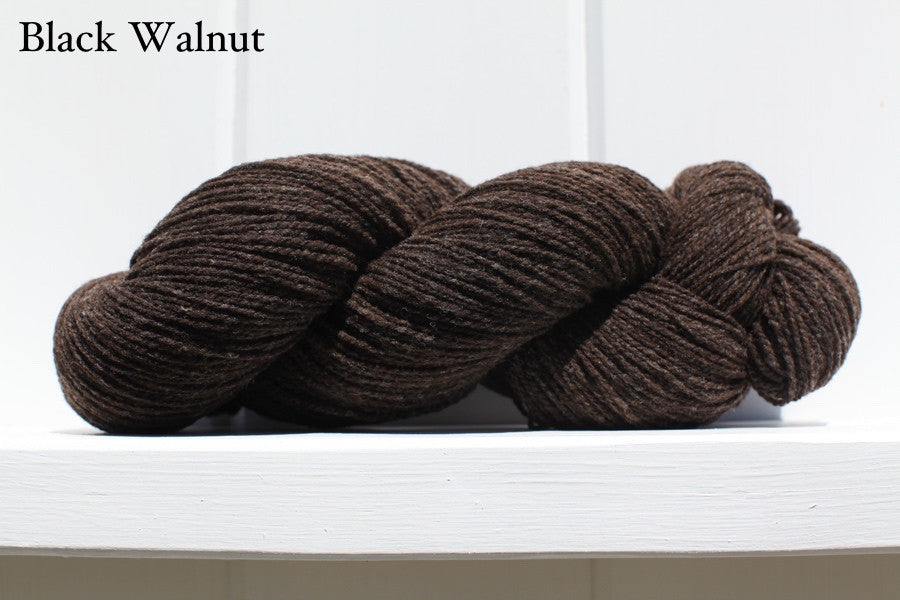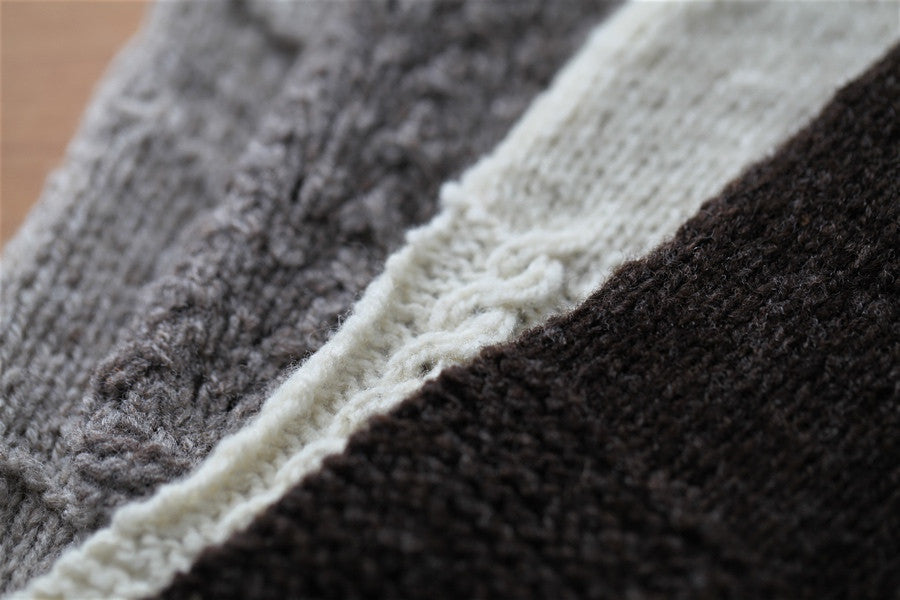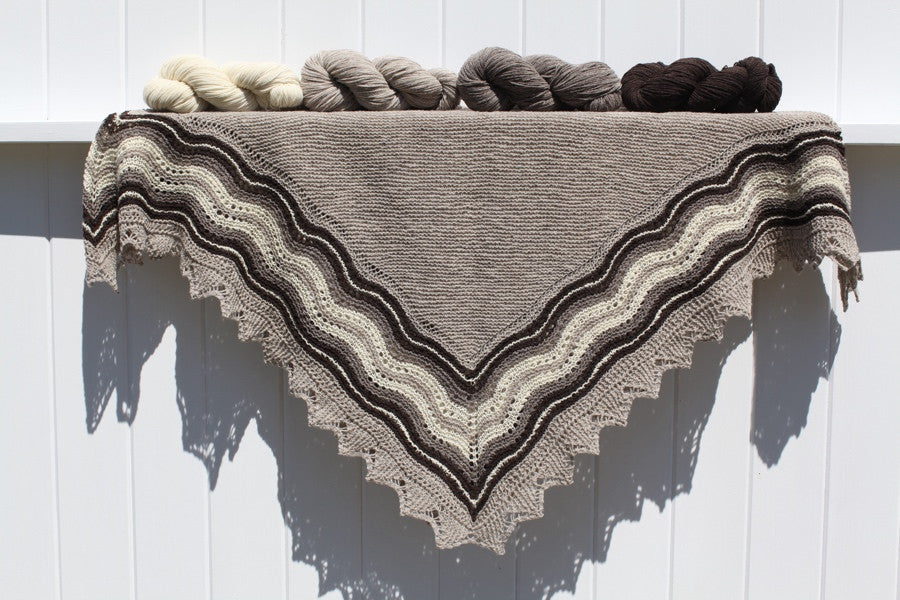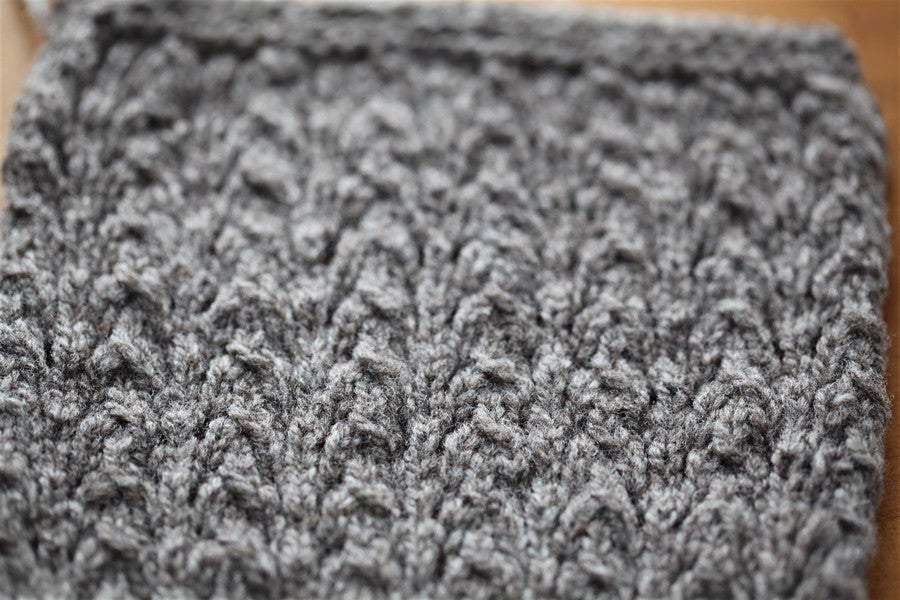CVM/Romeldale 2.0
$ 32.00
Quick Facts
Gauge: A woolen-spun, fingering-weight two-ply yarn, CVM/Romeldale 2.0 produces the most stable and cohesive fabric in the 5.5-6.5 stitches per inch range on US 2-4 (2.75-3.5mm) needles. As always, use those numbers as a starting point for your own swatching.
Put-up:
Arborio 405 yards (370m)
Rye 410 yards (375m)
Lentil 425 yards (388m)
Black walnut 450 yards (411m)
Skein weight: 100g / Arborio skeins average 96g
Source: Wool from CVM/Romeldale sheep raised in Pennsylvania. After shearing, each fleece was hand-skirted and sorted by color. The fibers were then scoured, sorted again into color groups, picked, carded, spun, skeined, and given a second scour by Anne Bosch at Blackberry Ridge Woolen Mill in Mt. Horeb, Wisconsin. Skeins were twisted at the Saco River Dyehouse before being shipped from Biddeford, Maine.
- The California Variegated Mutant began as a fluke. In 1915, a man named A.T. Spencer attended the Pan-American exposition in San Francisco and came home with a bunch of New Zealand Romney sheep. He crossed them with his Rambouillet flock, hoping that the longwool Romney genes would help his Rambouillet sheep grow longer wool. It worked.
In the 1940s and '50s, another man and some partners took over the breeding plan of what had, by then, become the Romeldale sheep breed. Glen Eidman was one of those partners. It came as quite a surprise when one of his ewes gave birth to a ewe lamb with a variegated coat. Other breeders might have put the lamb on the meat truck pronto, because color can jeopardize the commercial textile viability of a flock.
But this was California in the 1960s, and Eidman had bigger plans. He waited and waited and waited, trusting that the genetic odds would be in his favor. Sure enough, a few years later, a variegated ram was born. He sent his two flukes away for a romantic weekend, and over the next 15 years he continued to work diligently to create a breed that would consistently produce this same miracle of variegation.The resulting breed was named California Variegated Mutant, or CVM for short. It's often referred to as CVM/Romeldale to honor the genetics that produced the variegated offspring.
For knitters and handspinners, CVM is like catnip. It has exquisite color subtlety, which you rarely see in a finewool. It has a generous staple length and a high crimp, making it easy to spin, tremendously lofty, and hard-wearing.
So rare is CVM that you'll be hard-pressed to find a commercial yarn version of it except for small batches from the breeders themselves. In fact, the American Livestock Breeds Conservancy considers it the most critically rare sheep breed in the United States. If there's CVM at a fleece show, I will not leave empty handed.
Which is a long way of trying to express just how lucky we were to get our hands on another batch of this fiber, and how rare this yarn is.
- The fibers in CVM 2.0 come from Marushka Farms in Pennsylvania, one of the largest and most discerning CVM breeders in this country. CVM 2.0 was not a yarn to be rushed. Marie and I began discussing a 2.0 in December of 2014, and the yarn has been slowly, steadily making its way into your hands ever since.
This 2.0 release takes everything I loved about CVM 1.0 -- those expertly spun, impeccably crimpy and robust fibers in earthy natural colors, also from Marie's farm -- and renders it a more precise, refined fingering weight. It's as if we went from a medium nib to a fine one.
Because of the "V" in the name CVM, namely variegation, this yarn required a lot more patience and hand-holding than most other yarns. The fleeces were expertly hand-skirted at the farm by Marie herself and sorted into color groups. In order to preserve those color groups, each batch needed to be scoured separately by hand instead of being run through a commercial scouring train in one big batch.
I knew Anne Bosch of Blackberry Ridge Woolen Mill in Mt. Horeb, Wisconsin, could do this. She did it with 1.0. And she has the skill, patience, and equipment to blend these 30+ boxes of wool into really gorgeous natural colors for us. Then there's the spinning, a perfect blend of jumbled chaos and order that Anne is able to create using the equipment she has so lovingly maintained over the decades. Anne brings a handspinner and hand knitter's sensibility to yarn, which is very important for as rare and nuanced a fiber as CVM.
In blending our colors, this time we set aside some of the white fibers for a crisp bright shade I've never seen in a commercially spun CVM yarn before. - CVM 2.0 is a swatcher's dream -- so much so, in fact, that if you aren't yet a swatcher, this will make you one.
CVM is a high-crimp, generous-staple fiber, giving a perfect balance of loft and durability to this yarn. Tug it and you'll feel tremendous elasticity. While the yarn may appear airy and soft, it's been spun with such skill that it can withstand multiple frogging before it breaks or begins to look shabby.
Because the fibers have been spun immediately after carding -- rather than being run through a pin-drafter or a comb to get the fibers perfectly uniform and aligned -- you have immense air, flex, and give in the finished results.
In knitting terms, this means a huge variation in the size of needle you can use -- and the kind of fabric it will produce.
I personally prefer a firmer, tighter stockinette for garments, which is where the US 2 (2.75mm) needle size and 6.5 its/inch gauge notation came from. Others prefer the more relaxed drape of a looser fabric and are willing to take the durability risk, which is where the US 4 (3.5mm) 5.5 stitches/inch gauge range came from.
If shawls with more flexible openwork are your goal, you can go even bigger, with a US 7 (4.5mm) needle or larger, depending on the fabric you wish to create. The yarn's woolen demeanor, fine gauge, and natural color range makes it especially ideal for any Shetland-inspired project.
As a case in point, Kai Yamamoto made this stunning, modified version of Gudrun Johnston's traditional Shetland Hap Hansel (Full Version) shawl using all four colors of CVM/Romeldale 2.0. Her version used 1,484 yards total, with 944 yds of Rye; 211 yds of Black Walnut; 188 yds of Arborio; and 140 yds of Lentil. (Translation: 3 skeins of the main color and 1 skein each of the others.) She worked the shawl on US 7 needles. I wish I could describe how incredible this plush fabric feels when folded over and wrapped around your shoulders.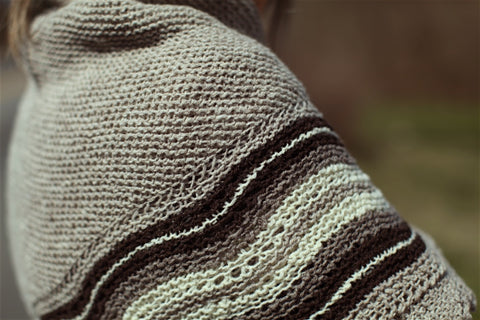
Regardless of what you choose to make out of this yarn, the bottom line is this: swatch, swatch, swatch! Be sure to wash your swatch, too. This yarn has one of the most exquisite and cohesive wash-induced blooms I've ever seen in a woolen-spun yarn. I can't wait for you to try it.

